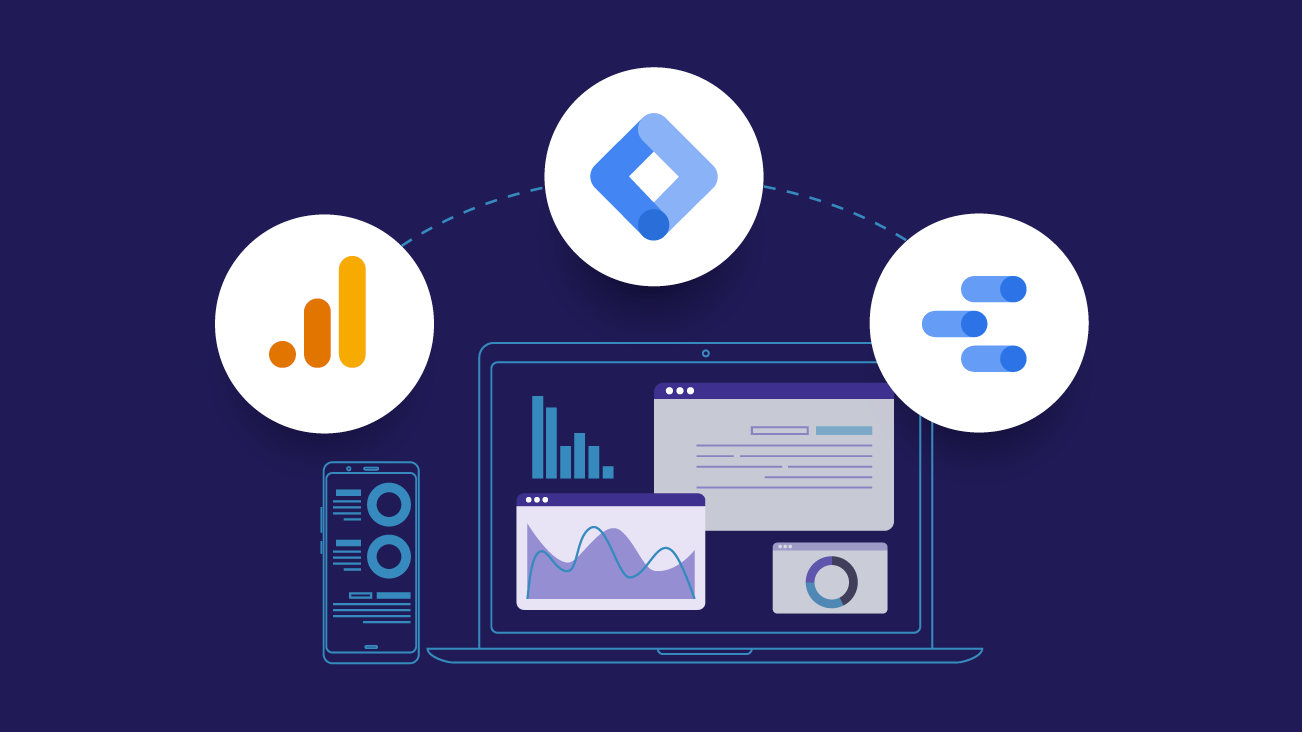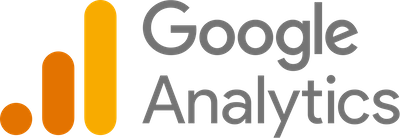Getting Started with Digital Analytics

Nearly 35 percent of websites in 2021 are not using any digital data analytics tools, according to W3Techs. Some businesses may feel they're either too small to benefit from robust data collection or feel they've missed the "data revolution."
Does this describe you? If so, now is the time to adopt digital analytics and begin making data-driven decisions. The ultimate question isn't, "Are you currently using analytics in some form?," it's, "Why are you not using analytics?"
When it comes to digital analytics, it's vital to any organization's success to use it to their advantage. You see, analytics is at our fingertips, and despite how "new" it may feel to some, it can't continue to be forgotten. Analytics can be your superpower to earning more business wins. Who wouldn't want that?
Dive in to learn more about what analytics is, why it's essential to your organization's success, and understand what analytics tools are on the market that we highly recommend. All in all, these analytics tools are great additions to your martech stack that will create value for your business to reach your organizational goals.
Analytics Makes the Difference
Let's start by dissecting what analytics is.
The team here describes analytics in many forms, allowing us to better understand analytics in a different light, and see how it can be used for your organization.
| Ana Paula Maluf, our Senior Analytics Consultant, describes analytics as "...the best way you can start making business decisions based on data. Of course, you need good data to make good decisions and the more you use it, the more you find out. Good or bad, it will help you improve." | |
| Beth Janairo, Associate Director of Data Science, explains, "A strong analytics strategy and implementation is the critical foundation for getting value from data. Without accurate and full tracking, you can't get clear and actionable insights and you don't really know how your digital channels are performing. If you have good data, there are lots of ways to use it to optimize and learn about your customers." | |
| Jonathan Weber, Senior Director of Data Platforms, defines "Data is the engine that drives sophisticated, modern marketing strategies. But simply collecting data isn't enough—companies need to make connections and drive insight about their audiences from this data, and do it in a way that respects [user] privacy." |
As you can see, there are a lot of different interpretations of what analytics really is and how it can be used; although, there is a common theme—start now! With more changes to the analytics playing field, we will see our definitions adapting as well. On the other hand, this is the best part of how we are constantly able to stay up-to-date on the latest analytics tools and trends.
Data can really be, well, anything! Here are a few examples:
- Social media engagement metrics and impressions;
- Lead generation data from a CRM system;
- Site visitor engagement on a website or app;
- Purchaser data off your point-of-sale (POS) system;
- And even something as simple as survey data.
Reports can be anything from spreadsheets, visuals, such as charts and infographics, and even beautifully made dashboards that take the data and shape it into something much easier to understand. The findings and insights really are the heart and soul of what is analytics—because we are "analyzing the data" to uncover our findings or our main points. When we analyze data we are using a combination of math, statistics, and even at times computer programming languages.
There is an infinite number of use cases where you can leverage analytics within your organization. Take your digital marketing data from places like Google Ads, or Facebook, and use it to better understand campaign return-on-investment (ROI).
In another instance, your organization is looking to go through a website refresh, in this case, using site data from sources such as Google Analytics can assist in the process of which site elements or content needs to be updated or enhanced for your visitors' benefit.
Let's break down an example to make this clear.
You're the head of a marketing team where you are not currently using analytics to the fullest extent. Your team has it collected on your website and social accounts, although it's not being used. There's a task at hand where upper management is looking to understand what marketing efforts could be implemented to increase website sales. Typically, this type of task was done entirely via intuition-based decision-making and experience, but that didn't always lead to success among past recommendations.
This time, you decide to try something new—leverage analytics with your collected data. You and your team get to work and analyze reports, create visualizations, and get a clear answer into what marketing efforts could aid in increased sales, and then use industry knowledge and intuition to make the final recommendations to deliver upon. All in all, your analysis was able to increase sales without all the guesswork—and that's a win!
This is just one example of how data and analytics can be leveraged. Take some time to think about how else you can fit analytics into a similar problem you may be facing.
Change Can Be Scary: It's Okay!
Let's be honest, some of us are very risk-averse, and changing our processes and toolbelt of tactics can be scary (I get it)! The reason analytics needs to be brought into your business decision-making process is ultimately due to how you are getting a mathematical "voice of reason." What this ultimately tells us, is what's happening in the data to aid in our next steps as a business.
In fact, we are at a point in time where data is very easy to collect due to how most, if not all tools have analytics capabilities on their platform. You may already have data at your fingertips that you could start analyzing today! The endpoint here is that companies can't afford to not use analytics at this point due to its power in use to reach their organizational goals.
Not using analytics or data in any form puts pressure and risk on an organization. This can negatively impact the business to have low sales, spotty client lead gen, or even a decrease in campaign success. The power of analytics allows you to make more informed, data-driven, decisions to solve business problems and reach your goals. The answer is clear, analytics is the way to go for your business.
Getting Started With Analytics
Hopefully, by now, you're excited to get started with analytics for your organization! There are a lot of different analytics tools available on the market, but some of the most popular and widely used types of analytics tools are in the areas of website/app analytics, event tracking, and even data visualization tools.
At Bounteous, we work with a lot of data, and with that comes a lot of analysis. We have compiled a list of some of our favorite analytics tools that we highly recommend to anyone getting started or looking for a new tool to get into.
Website & App Analytics
Let's face it, EVERYONE has to have a website, or maybe even an app in this day and age. Are you currently measuring your web or app traffic in any way? This is crucial data that needs to be collected regardless of business or industry size.
A website is essentially how you market and promote not only your brand, but also how you may sell products, obtain paid advertising based on visitors reading content, lead generation for new clients or customers, and really anything else that helps your business grow. This results in a LOT of data that can help with future design changes, improving sales and marketing strategy, and more.
Learn More About Website & App Analytics
At this time, there's a wide range of analytics tools available. Specifically, we leverage Google Analytics and Adobe Analytics primarily. Depending on what your website is built with, there may be a pre-built analytics tool that you already have at your discretion!
The key data that most analytics tools have for app and websites are:
- Page information (page title, page path) - what are your visitors seeing?
- Site Search - what your visitors search on the website?
- Geographic - where are your visitors coming from?
- Real-time - what are visitors doing right now on the website?
- Campaign Data - how are our campaigns and marketing efforts influencing site visitors?
With website and app data, there's a lot of different analyses that can take place and additional features can assist in that process, such as the ability to create audience segments to better understand the behaviors of subsets of your target audience.
Another feature that can generate a lot of insights is the ability to track conversions of goals that can be set for visitors. For example, understanding the engaged visitors across site content, or high-value customers can assist with understanding the customer journey and consumer preferences.
Even just the ability to integrate other tools such as Google Ads, Salesforce, or Search Console to your website and app analytics tool is essential for more enhanced analytics.
Bonus Analytics! Google Analytics 4 Properties
The next generation of Google Analytics is here, and it's called Google Analytics 4 Properties (GA4). The GA4 property essentially is a way to track and measure website and app traffic in a new collection method. There are a lot of added features and benefits of a GA4 property such as built-in analysis tools, audience management, and even out-of-the-box event tracking. Check out the below resources to help you get started:
- I've Just Installed Google Analytics, Now What?
- Getting Started With Google Analytics Segments
- A Plea For Using Google Analytics Goals
- Google Analytics 4 Properties Everything You Need to Know
Get Started With Website & App Analytics
Looking to get started with analytics for your business? Check out Google Analytics! Google Analytics offers a free version of their tool, along with a paid enterprise version.
Remember that depending on what platform your website was built on, there may be built-in analytics functionality; especially on website builders such as Wix, WordPress, Shopify, Squarespace, and others. By getting started today, you're able to start collecting data to analyze in no time!
Event Tracking
Your site visitors are not just coming to your website to read content and then leave. All websites and apps have some form of "clickable elements;" also known as an event.
If your website has any call-to-action buttons, videos, forms, commerce elements, or even downloads, then you have an event. By tracking these events and obtaining additional analytics, you can get more from the data to make better business decisions.
Learn More About Event Tracking
We use Google Tag Manager for event tracking; that being said, there are other options on the market you can choose from to decide what works best for your needs. For example, Tealium, HotJar, and BrightEdge are all great choices for your organization's event tracking needs and capabilities.
Google Tag Manager offers a ton of functionality and customization to track events within websites and apps and can be integrated seamlessly into the Google Analytics interface. This alone makes reporting very easy, which leads to a great user experience when it comes to your data analysis.
Get Started With Event Tracking
Looking to begin event tracking? Try getting started with Google Tag Manager. Similar to Google Analytics, there is a free version, along with a paid 360 license. To get started with Google Tag Manager, you need to have Google Analytics set up on your website or app. From there, the setup is as easy as a few steps to start tracking events on your website.
Data Visualization & Reporting
We are now onto the fun part—data visualization! We walked through the importance of gathering data, having tools in place to compile the data, and grabbing additional data through event tracking. Now, we're on tools we need to help us visualize and report our data to make business decisions based on the analysis.
Learn More About Data Visualization & Reporting
Our Analytics & Insight team works hand-in-hand with Google Data Studio. Although, there are a lot of other tools available such as Tableau, PowerBI, and Looker. These data visualization tools aid in transforming data into insights through the creation of data visuals and charts to tell a story.
For example, tools such as Google Analytics provide a table of the data to show top pages visitors were on, among other data points and engagement metrics. This is fine, and can still help you identify different business opportunities. But, we can do better. That's where data visualization comes to play.
We can transform that same data from Google Analytics, or other sources, and turn it into a story of why visitors came to your site, what content they prefer, and even highlight what actions can be taken to improve business strategy and efforts.
These visualizations can be turned into reports for ad-hoc, weekly sales reports, or even quarterly marketing reports to assist with campaign planning. The possibilities are endless and totally customizable to your organization.
Get Started With Data Visualizations & Reporting
Looking to get started with Google Data Studio? If so, you're in luck because we have a wide variety of blog content available to get started, along with different ways you can leverage data for analysis and reporting needs.
- Getting Started With Data Visualization Using Google Data Studio
- Supplement Your Google Analytics Data In Data Studio
- Data Visualizations: Points, Lines, Bars, and Pies
Forward Thinking: Get Started Today
Regardless if you're currently using analytics, or not, the answer is clear—it's crucial to get started with analytics for your organization. It's important to continue the conversation with your team and key stakeholders on how you can bring more analytics into your business decision-making process.
There are plenty of solutions and tools on the market that can help you get started with analytics, but we highly recommend Google Analytics, Google Tag Manager, and Google Data Studio.
Remember, there is always still a lot to learn about analytics, so be sure to continue your education, whether that be through reading articles, attending a training, or even scheduling a consultation if you're looking to work with us.








